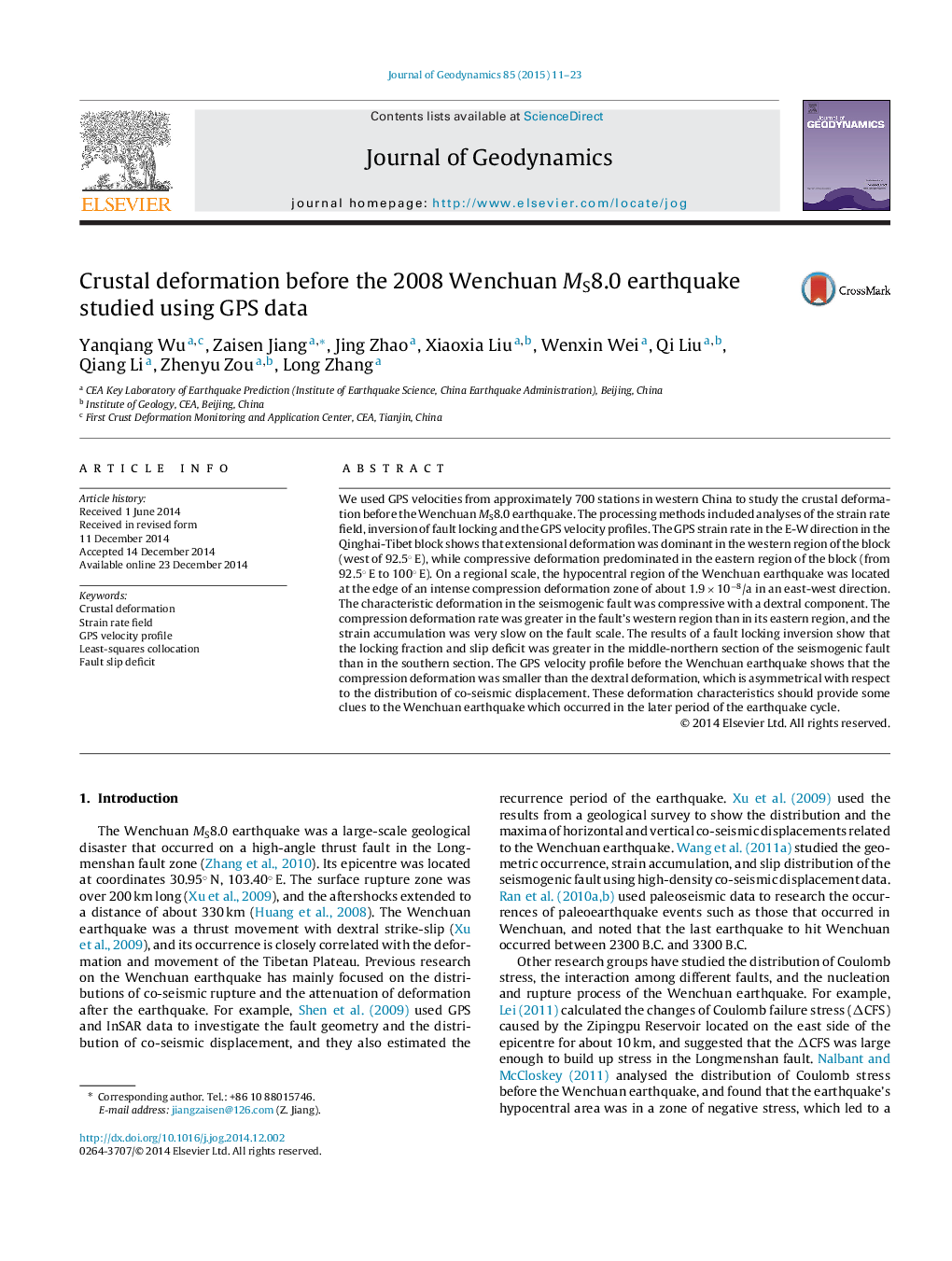| Article ID | Journal | Published Year | Pages | File Type |
|---|---|---|---|---|
| 4688079 | Journal of Geodynamics | 2015 | 13 Pages |
Abstract
We used GPS velocities from approximately 700 stations in western China to study the crustal deformation before the Wenchuan MS8.0 earthquake. The processing methods included analyses of the strain rate field, inversion of fault locking and the GPS velocity profiles. The GPS strain rate in the E-W direction in the Qinghai-Tibet block shows that extensional deformation was dominant in the western region of the block (west of 92.5° E), while compressive deformation predominated in the eastern region of the block (from 92.5° E to 100° E). On a regional scale, the hypocentral region of the Wenchuan earthquake was located at the edge of an intense compression deformation zone of about 1.9 Ã 10â8/a in an east-west direction. The characteristic deformation in the seismogenic fault was compressive with a dextral component. The compression deformation rate was greater in the fault's western region than in its eastern region, and the strain accumulation was very slow on the fault scale. The results of a fault locking inversion show that the locking fraction and slip deficit was greater in the middle-northern section of the seismogenic fault than in the southern section. The GPS velocity profile before the Wenchuan earthquake shows that the compression deformation was smaller than the dextral deformation, which is asymmetrical with respect to the distribution of co-seismic displacement. These deformation characteristics should provide some clues to the Wenchuan earthquake which occurred in the later period of the earthquake cycle.
Related Topics
Physical Sciences and Engineering
Earth and Planetary Sciences
Earth-Surface Processes
Authors
Yanqiang Wu, Zaisen Jiang, Jing Zhao, Xiaoxia Liu, Wenxin Wei, Qi Liu, Qiang Li, Zhenyu Zou, Long Zhang,
